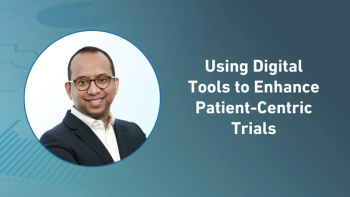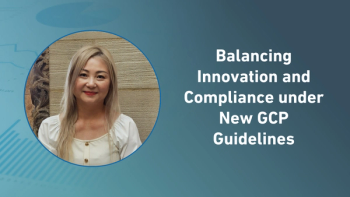
- Applied Clinical Trials-08-01-2024
- Volume 33
- Issue 8
The Evolution of CRAACO: Gains and Lessons Learned
Tracking efforts to advance the mission and concept of "clinical research as a care option."
Around this time in 2015, I had the pleasure of enjoying lunch with a special friend, Jennifer Byrne, current CEO and founder of Javara. It was at this lunch that Byrne and I discussed how important clinical trials were to us both—personally and professionally.
As a young child I participated in my first clinical trial. As identical twins, my sister and I were interesting subjects for researchers. In the early 1980s, we participated in a research study being conducted at the University of Michigan on the differences in growth rates among twins. As an adult, I entered the WISDOM study to support the advancement of early detection and breast cancer screening protocols.
For those of you who know Byrne, you know the advancement of care options through well designed clinical trials is a passion of hers. It was at this lunch that we coined the term “Clinical Research as a Care Option (CRAACO)” and coauthored the first industry-sponsored white paper on the topic.1 There has been much debate about clinical research not being a treatment option, as the intervention is not approved. Our white paper aimed to show that clinical research is a care option and as such, we wanted to ensure that the good work of many in providing high quality care to participants who originate as patients should not be overlooked.
Each year we get closer to finding treatment options for the rarest of diseases to the most widely occurring conditions. Without clinical trials, the advancement of some of the most popular selling products having a profound impact on a major health concern globally, such as obesity, would not have been possible. CRAACO was termed and the movement formed to showcase the benefits of clinical research in advancing innovation and overall patient care.
In 2015, accountable care organizations were wrestling with the requirement to showcase benefits against the triple aim: decreased cost of care, reduction in hospitalizations, and enhancement in patient satisfaction with care. We embarked on a research project to evaluate and showcase that clinical trials played an important role in supporting these efforts. In our paper, we explored the results of a survey that was designed to investigate the levels of satisfaction with clinical research-related care among diabetic patients participating in an ongoing diabetes clinical trial, DM40. We compared this to a national baseline survey, as well as survey results from a segment of patients at Wilmington Health and 45 participants in the DM40 project.
As the white paper reports, the data indicates a high and increasing level of patient satisfaction and engagement with clinical research. The results demonstrate a positive experience across all dimensions, with significantly higher levels of satisfaction in many patient-important dimensions, such as access to care, efficiencies in care delivery, and qualities of care received from the research team.
Now, almost 10 years later, I am amazed at how that lunch, several talks focused on CRAACO, and the focus of many within the industry have been able to evangelize this topic and advance the mission, as well as evolve the perception of clinical trials in our society near and far. This has resulted in increased awareness and general accessibility of clinical trials.
A report by Ken Getz in Applied Clinical Trials in 2018 highlighted that during the prior five years, “The public’s knowledge and awareness of clinical trials have stayed relatively the same. Despite the majority claiming they understand what is meant by the term ‘clinical trial,’ findings from both surveys suggest this knowledge is superficial at best. Over the years, similar proportions of the public indicate that they understand what a clinical trial is (90% indicating 'yes,’ they understood in 2013, and 82% indicating they understood ‘somewhat’ or ‘very well’ in 2017), yet many are not sure about how much of a role clinical research plays in the development of new medications.”2
Nevertheless, since 2013, with the onset of technologies matching patients with clinical trials, including ClinicalTrials.gov, XCures, BEK Health, and Antidote, to name a few, the self-reported ability to find a clinical trial has increased.
In April of 2022, the FDA released draft guidance on the diversity plans designed to improve enrollment of participants from underrepresented racial and ethnic populations in clinical trials.3 The guidance discusses broadening the criteria for patient eligibility and avoiding unnecessary exclusion. In addition, it recommends developing eligibility criteria and improving trial recruitment in hopes that the participants will better reflect the population most likely to use the drug. The guidance also presents recommendations on developing a race and ethnicity diversity plan to enroll adequate numbers of patients from underrepresented populations in the US.4
This was another step in the right direction. Since the release of this guidance document, I have seen many groups explore new mechanisms to reach potential patients to serve as participants in their studies. Examples include embracing decentralized or hybrid trials, using mobile clinics to bring the trial procedure to the home, funding by the NIH to understand inequities and disparities in healthcare, and the countless companies that have launched their businesses with a focus on bringing clinical research to communities across the country. While some of these approaches have been met with mixed success or are in early days, it is refreshing to see the industry willing to consider new strategies to solving age-old problems.
On March 20, 2024, Fierce Biotech highlighted Eli Lilly’s thinking around bringing the clinical trial to the patient. In the article,5 Lilly representatives unequivocally share their perspective that community-based clinical trials are the wave of the future. Seidler et al. backed that up in their research, finding that geographic proximity is a barrier preventing equitable access to clinical trials. They analyzed ZIP Codes of 174,503 research sites from 2002 to 2007, and discovered most sites are concentrated in urban areas with academic research institutions, large hospital networks, and other established social services; conversely, rural areas had few, if any research sites.6
As access to clinical trials remains a challenge faced by many Americans, I think this is fantastic to see this claim by one of the leading pharma companies worldwide and I applaud the organization in its efforts to push fellow sponsors to embrace the paradigm as a way to boost enrollment and diversity in clinical trials. Adding to this has been the tireless work of the Association of Clinical Research Professionals (ACRP) to champion people who are advancing health and the Society for Clinical Research Sites (SCRS), which has been steadfast in its focus to unifying the voice of the global clinical research site community. The group’s annual meeting is a fantastic opportunity for professionals from all facets of this ecosystem to come together to share ideas and discuss the challenges and opportunities to advance CRAACO.
Thinking of what we can do as a community, my focus lands on continued awareness efforts and support for industry groups such as the Center for Information and Study on Clinical Research Participation, ACRP, and SCRS, and continued educational efforts to support and grow new professionals in the research ecosystem, such as OWL and the Healthcare Businesswomen’s Association. It is also important to continue to comment and share insights when provided the opportunity by regulators worldwide.
As a community of health advocates who explore all options and leave no stone unturned, there remains a lot of work to be done. Many new business ideas await funding, and even more ideas are yet to come. Efforts to improve awareness, leverage technologies to connect patients to clinical trial options, and advance site engagement continue to shape the landscape of CRAACO.
Jeanne Hecht is CEO and Chairwoman, Lexitas Pharma Services
References
1. Shen, J.; Buechler, A.; Byrne, J.; Hecht, J.; James, J.; Pancratz, B. Clinical Research Participation as a Care Option: Driving Patient Experience and Satisfaction. White Paper. 2015.
2. Getz, K. Anderson, A. Trends in Global Public and Patient Perceptions of Clinical Research. Applied Clinical Trials. November 1, 2018.
3. FDA, Enhancing the Diversity of Clinical Trial Populations — Eligibility Criteria, Enrollment Practices, and Trial Designs Guidance for Industry (November 2020).
4. FDA, Diversity Plans to Improve Enrollment of Participants from Underrepresented Racial and Ethnic Populations in Clinical Trials; Draft Guidance for Industry. (April 2022).
5. Masson, G. Are Community-Based Trials the Wave of the Future? Eli Lilly Thinks so. Fierce Biotech.
6. Seidler, E.M.; Keshaviah, A.; Brown, C.; Wood, E.; Granick, L.; Kimball, A.B. Geographic Distribution of Clinical Trials May Lead to Inequities in Access. Clinical Investigation. 2014. 4 (4), 373–380.
Articles in this issue
over 1 year ago
Applied Clinical Trials July/August 2024 Issue (PDF)over 1 year ago
What's Next for DCTs?over 1 year ago
Streamlining Clinical Trials with eSource: Insights from MSKover 1 year ago
Decentralized Clinical Trials: Bust or Breakthrough?over 1 year ago
'Fit-for-Purpose' Considerations for Remote TrialsNewsletter
Stay current in clinical research with Applied Clinical Trials, providing expert insights, regulatory updates, and practical strategies for successful clinical trial design and execution.






.png)



.png)



.png)
.png)
